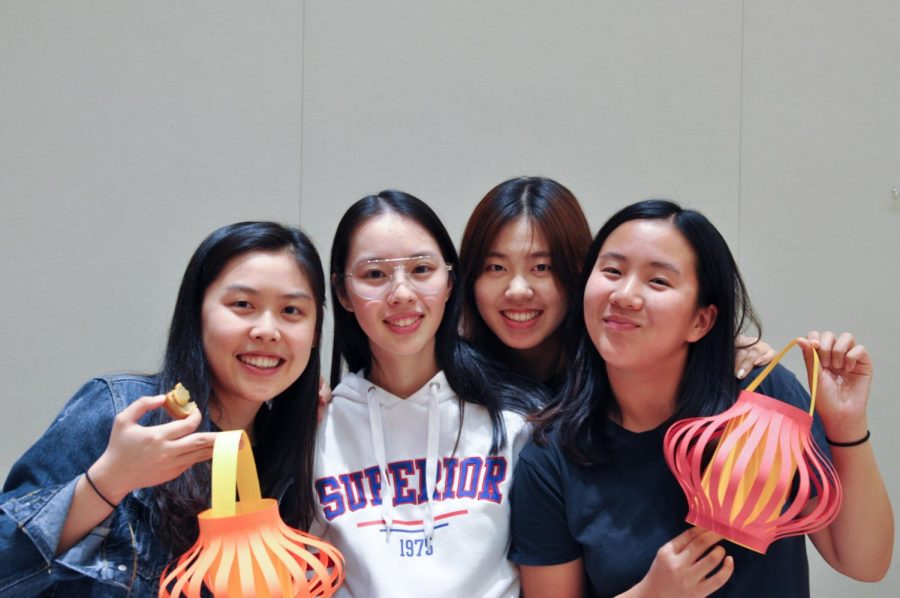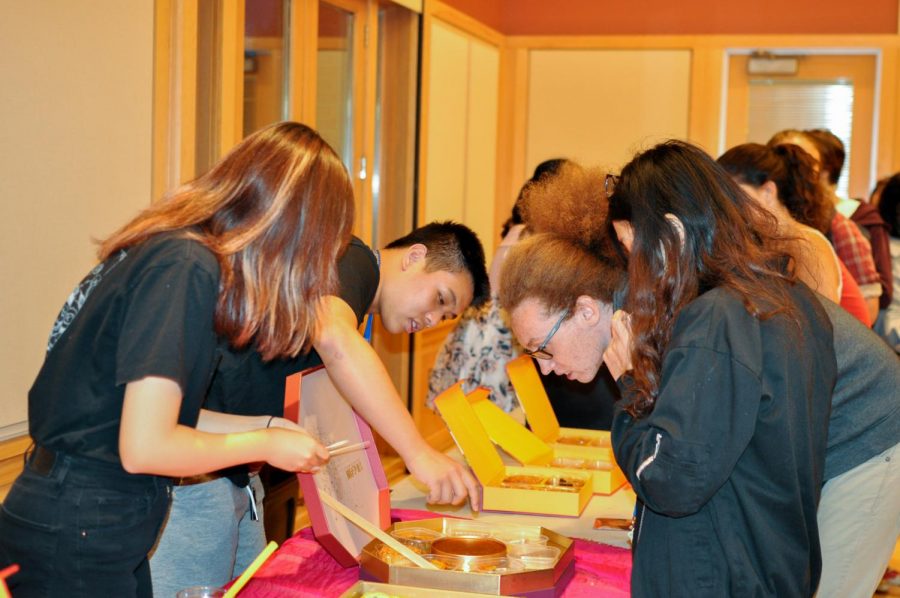Mid-Autumn Festival
September 26, 2019
On Sep. 15, the Reid ballroom’s walls were lined with numerous traditional Chinese activities and the room itself was filled with an excited crowd, transforming the space into the setting for a Chinese harvest festival called Mid-Autumn Festival, put on by the Asian Studies Interest House and China at Whitman.
One of the tables closest to the entrance was covered with patterned paper, an assortment of colorful pens and a flurry of handwritten messages to be mailed out by the event’s organizers. The letters’ recipients ranged from friends to lovers to family.
That sort of sentiment, an emphasis on one’s relationship with their community, rang through every one of the activity stations at the Mid-Autumn Festival.
One of the activity stations, the tea table, offered thirsty wanderers a variety of teas to try.
Another station taught interested individuals how to make paper lanterns, items often carried around or used as decoration during traditional mid-autumn festivals. In the corner, a traditional dice-throwing game incited cheer and chatter from its participants and mediators as well as offered prizes for its winners.
The calligraphy table carefully and patiently guided visitors through writing Chinese characters with calligraphy brushes and ink. At another station, slices of mooncakes were served to visitors
For Katie Davie, a Whitman alum and Resident Director of Anderson Hall, the event was her first time celebrating the Mid-Autumn Festival.
“It’s lovely,” she said. “It makes me feel nostalgic.”
It was also sophomore Sean Collier’s first experience with the festival.
“I was originally just following around a friend,” he said, but he found the event to be “a really good cultural experience.”
To junior Tracy Cui, Resident Assistant of the Asian Studies House, that kind of reaction was one of the things organizers strove for while putting together the event.
“China at Whitman — they want to spread their culture and share the things they care about to the whole campus,” she said.
But the event meant more than that. Cui herself had celebrated the festival for the past 18 years back home.
“But right now, there’s no chance to go back and celebrate it,” she said. “We wanted to give an opportunity for the students who would usually celebrate it back home to celebrate it here, too.”
Whitman’s Mid-Autumn Festival did not just celebrate the festival in itself. Through engaging and interactive events, it built bridges between the festival’s cultural practices and those unfamiliar with it as well as provided an avenue for many students far from home to celebrate an important tradition with others.







